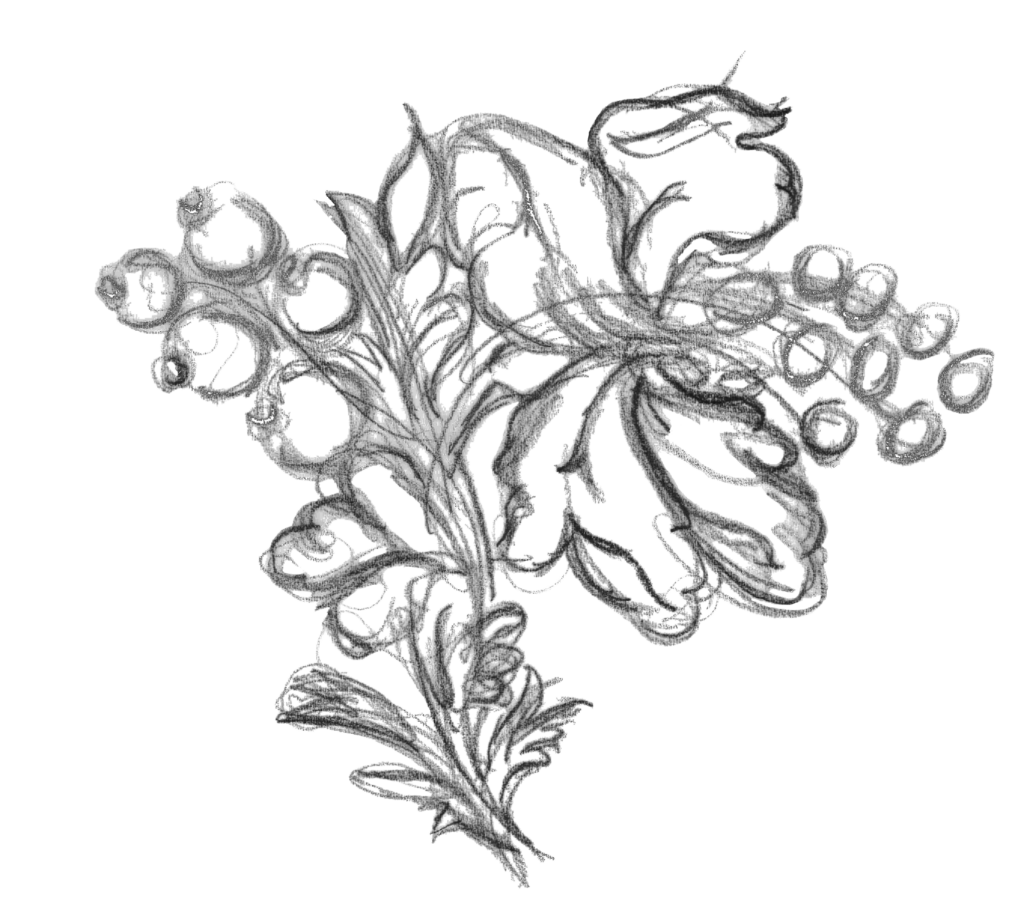Christchurch Mansion and a very special piece of design history.
In 1547 Edmund Withypoll began building Christchurch mansion as it stands. The estate passed through marriage and inheritance into the hands of the Devereaux’s before being purchased in 1735 by Claude Fonnereau, a wealthy London Merchant of Huguenot decent.
After extensive alterations and expansion of the grounds the estate was again put up for sale in 1894. Purchased by a property syndicate some of the estate was sold off for development and the mansion was presented to Ipswich Town as a gift. Today the mansion is open to the public as a museum and art gallery.
The reason for our interest in Christchurch Mansion is the remarkably preserved flock wallpaper on the walls of the State Bedroom. The museums information office dates the hanging of the flock to the 1740’s, when the mansion was owned by Claude Fonnereau who was of Huguenot decent. This is an interesting connection as by the 1730’s many flock papers were direct imitations of damask or velvet .
The Victoria & Albert Museum (V&A) dates the Christchurch flock slightly earlier to the 1730’s, with HM Privy Council office at Whitehall using the same design and colouring in 1735, a piece of which was later gifted to the V&A archive. Patterns at this time seem to have been selected from a small range of popular designs. Anthony Wells-Cole states in his book ‘Historic Paper Hangings from Temple Newsam and other English Houses’ (Pg28) “There is scarcely a great house that is without an example, either as damask or flock; Blickling, Clandon, Corsham, Hampton Court, Hopetoun, St Donat’s Castle, Spencer House, Wilton.” The designs popularity endures as we are still weaving orders for it today.
The design at Christchurch was originally a deep crimson flock with a pink ground, which can now be seen as faded to buff. The original self-colour would have been more in keeping with the silk damask that the papers imitated. The problem with textiles is that they can be fragile; flock paper offered more longevity and although the figure is still wool fibre, the adhesive used meant it was not susceptible to moths.
The V&A state “The design itself has been traced back to an Italian brocade and a damask curtain, both in the Department of Textiles and Dress at the V&A” an image of the later can be seen in Peter Thornton’s book ‘Baroque and Rococo Silks’ (Plate 114A). Thornton describes it as “A pattern which was immensely popular throughout the middle decades of the eighteenth century…Many examples of this kind of pattern have survived to testify to its popularity. It seems to have been evolved around 1730 and to have been popular for several decades; no doubt minor alterations were made all the time to comply with changes in taste.”
The Humphries Weaving link to this design, which in our archive is known as the Campania, stems from Richard Humphries apprenticeship at Warner’s in the 1960’s. He first saw the design when considering fabrics for the firm’s Centenary Exhibition being held at the V&A in 1970. Through this he met the late Natalie Rothstein, the museum’s curator of silks and renowned academic. Natalie recognised the Campania and recalled that the museum only had a photograph of the design (as previously referenced in Baroque and Rococo Silks) that she had edited but also referenced the earliest dateable version of the pattern still in existence at Christchurch Mansion, Ipswich.
Warner’s described the Campania in their book of hand woven fabrics as; “Faithful to the earliest known surviving examples dating from 1720-1730… Many other surviving examples are known, dating from both the eighteenth and nineteenth centuries … Warner’s first made Campania in 1901, and it was later used in the Rubens Room at Windsor Castle.”
When Warner’s ceased weaving in 1972 the Jacquard cards for the Campania design were among those that Richard saved and as such Humphries Weaving were able to continue to weave the popular design. In 1991 Humphries studio redrew a further version of the design with naturalistic differences, which became known in our collection as the Colne damask.

Peter Gowers hand weaving the first order of Campania at Humphries Weaving in 1977 for the Chippendale couch bed at Bolling Hall
Humphries Weaving are now able to offer both versions of the design to clients. As Thornton referred to previously; design choices and alterations continue to be made in line with changing tastes, including scale and quality. This has led to Humphries Weaving producing over 25 versions for a wide range of prestigious locations including Bolling Hall, Marlborough House, St James’s Palace, Ballyfin House and most recently the Suisse museum and National Trust.
Sources
Friends of Ipswich Museum (2015), ‘Christchurch Mansion Ipswich Souvenir Guidebook’ Ipswich Borough Council and Jigsaw Design & Publishing Ltd.
Oman, C and Hamilton, J (1982) ‘Wallpapers, A History and illustrated catalogue of the collection in the Victoria & Albert Museum’ Crown Copyright. P109.
Wells-Cole, A (1983) ‘Historic paper hangings from Temple Newsam and other English houses’: Leeds City Art Galleries press. P28.
‘Victoria and Albert Museum Flock Wallpapers’ [website available at] https://www.vam.ac.uk/content/articles/f/flock-wallpapers/ (accessed on 11/11/2015)
‘Victoria and Albert Museum Spelunker Facets / materials / flock’ [website available at] https://va.goodformandspectacle.com/facets/materials/flock?page=2 (accessed on 11/11/2015)
Thornton, P (1965), ‘Baroque and Rococo Silks’ Faber and Faber Limited. P141.










